The 1980 Porsche 924 Carrera GT Le Mans racer was recently reunited with its British driver line-up at Silverstone prior to beginning restoration by Porsche Classic Centre Partners.
Thirty-five years since it last turned a wheel in anger, this significant Porsche race car arrived in the UK in the first stage of a journey that will see it restored prior to returning once again to the circuit.
The Porsche 924 Carrera GT Le Mans raced at the French 24 Hours endurance motor sport event in 1980 as part of an innovative three-car, international team.Car #2 was the British entry, #3 the American and #4 was the German car. Each car featured distinctive liveries based on the national flags, and the British car is arguably the only Porsche factory race to have competed with such a prominent red, white and blue motif.
The driving force in 1980 comprised Tony Dron and Andy Rouse, and they finished the 24 Hours in 12th place. At a special event at the Porsche Experience Centre, Silverstone, the two British racers were reunited with ‘their’ car for the first time since the race.
The front-engined, rear-wheel drive 924 coupe has been in the storage archives of the Porsche Museum in Stuttgart since its retirement. Now, Porsche Cars GB has been entrusted with the restoration of the famous British car #2 in a unique initiative that will see the skilled technicians at Porsche Classic Partner Centres undertake key aspects of the work.
A thorough inspection of the race car resulted in a comprehensive list of work that will be required to bring it back to a representative — yet historically sympathetic — race-ready condition. Porsche Centre Glasgow will work on the suspension, brakes and wheels; Porsche Centre Hatfield will take on the gearbox and drivetrain; Porsche Centre Leeds will have the responsibility for the electrics and radiator plumbing; and Porsche Centre Swindon will breathe new life into the engine. Road and Race Restorations in Manchester, a Porsche Recommended Body Repairer, will complete the project by restoring the bodywork and interior trim.
This project supports the 40th anniversary of the launch of the 924 in 1976, the first model in the so-called ‘transaxle’ series of Porsche cars, with their front engines and gearboxes located in combination with the rear-driven axle. Once completed, it is intended the historic 924 Carrera GT Le Mans will be demonstrated at events such as Goodwood Festival of Speed, Silverstone Classic and Classics at the Castle – and also proudly displayed in the showrooms of the Porsche Centres responsible bringing this part of Porsche motorsport history back to life once more.
Porsche 924 Carrera GT Le Mans
Since its earliest days, Porsche has taken lessons from the race track and applied them in the development of its road cars — and vice versa. The 924 Carrera GT Le Mans was no exception. Taking as its basis the 210 hp 924 Carrera GT road car, famous Porsche racing engineer, Norbert Singer, was given the task of creating a fully-fledged racing car. Singer and the engineering staff at the Porsche Motorsport team at Weissach, near Stuttgart, Germany, drafted a relatively modest list of modifications. Under the product code Type 937, a production Carrera GT bodyshell was stiffened considerably with the addition of an aluminium roll-cage, and the exterior bodywork was clothed in new lightweight plastic panels. These extended to the nose, which was made more aerodynamic while keeping the appearance of the 924, and also helped to shroud the wider 11-inch front wheels and 12-inch wide rear wheels with racing Dunlop slick tyres.
The front cross-member was welded in place to increase cornering stiffness, and although the MacPherson strut front suspension was retained, titanium springs and Bilstein gas dampers were fitted. At the rear, however, the torsion bars were supplemented with titanium coil springs. The driveshafts were also made of titanium (in fact, they were taken from the ferocious 911-derived 935 race car) and the rear differential was fully locked for maximum traction.

Under the bonnet, the engine was relatively straightforward. The VW-based 1,984 cc, turbocharged in-line four-cylinder underwent some modifications to help with airflow and cooling; the KKK turbocharger was moved to the left side of the engine, and the intercooler increased in size and moved to the front. Bosch/Kugelfischer mechanical fuel injection replaced the production specification K-Jetronic, and dry-sump lubrication ensured consistent oil supply under racing loads.
As a consequence, power output rose by 50% from the 210 hp / 6,000 rpm of the road car to 320 hp / 7,000 rpm, with a 40% boost in torque. Combined with a weight reduction to 930 kg from 1,180 kg, the car’s performance leapt forwards. For a Le Mans racer, top speed is a prime focus and maximum velocity rose to 180 mph; large ventilated and cross-drilled brake discs (borrowed from the 917) were employed to slow the cars after the Mulsanne Straight.
In the context of the recent success at Le Mans with prototypes vying for outright wins (and already by 1980 Porsche had an enviable record of triumphs in the 24 Hours), there was some mixed feelings regarding the relative performance of these brave 924 Carrera GTP race cars. However, a suggestion by Porsche Cars GB to run the cars in the national identities of Britain, Germany and the US, with national drivers and exterior liveries, saw the programme gain a welcome boost internally at Porsche AG and also generate wide media interest.

In the event, external factors prior to the 1980 Le Mans start, saw Derek Bell switch to the American #3 car with US driver Al Holbert, and the #2 British car was shared by the proven pair of Tony Dron and Andy Rouse, and the #4 German car was driven by Jürgen Barth and Manfred Schurti.
A wet start to the Le Mans 24 Hours race itself saw the modest expectations of qualifying transformed considerably, with Bell running 16th overall after one hour followed by Barth in 22nd and Rouse in 28th. By nightfall, the three 924 Carrera GTP race cars were running 10th, 14th, and 15th and by breakfast time on Sunday morning they had moved up to sixth, seventh and eighth.
At the chequered flag, the #4 German car finished in sixth place, a remarkable achievement for the 924 Carrera GTP in what was not only the car’s debut at Le Mans but also the first time the 924 model had been entered by the Porsche factory in motor sport. The #2 British car crossed the line in 13th position, one place behind the #3 American entry.

In line with the Porsche ethos of race to road technology transfer, the 1980 Le Mans programme inspired the production of 59 examples of a new 924 GTS model that was homologated for competition use, plus a further 19 examples of the higher-powered GTR offered in full Le Mans race specification for customer motorsport (and priced at 180,000 Deutschmarks).
In a fitting post-script, in the 1981 Le Mans 24 Hours, the Porsche factory entered a 924 GTP which with a large 410 hp 2,479 cc four cylinder engine was technically a prototype of the forthcoming 2.5-litre 944 road car. Driven by Jürgen Barth and Walter Röhrl, it won the GTP class category and placed seventh overall. Of three privately-entered 924 Carrera GTR cars, the top finisher was the car of Andy Rouse and Manfred Schurti, in 11th place.
[Source: Porsche]


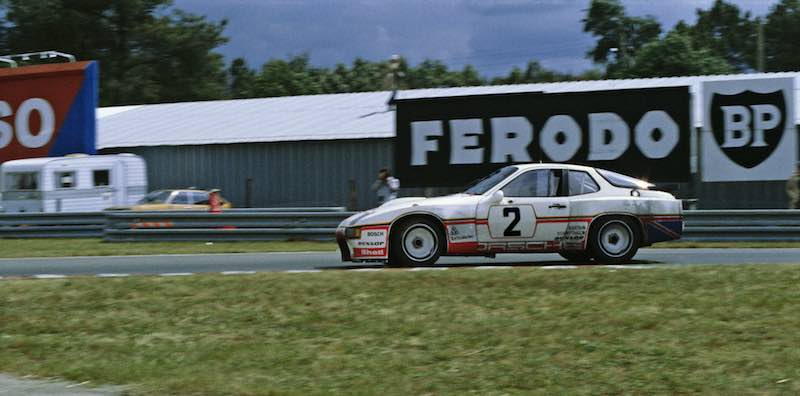


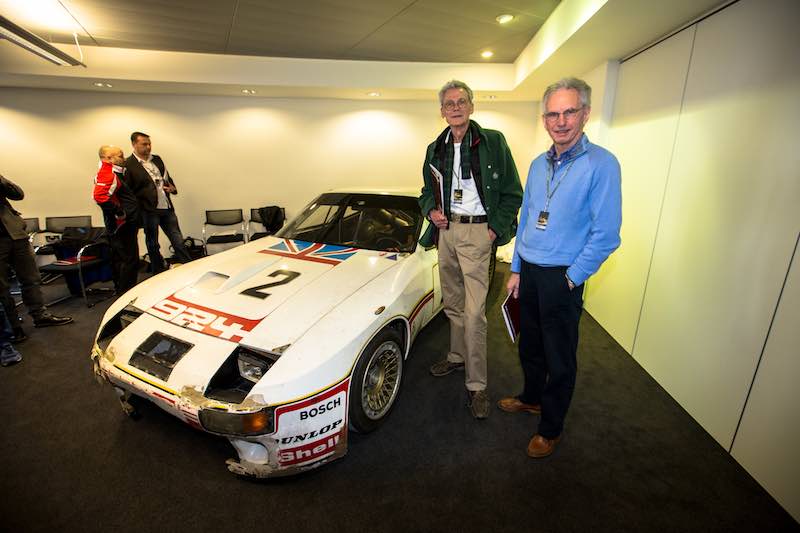
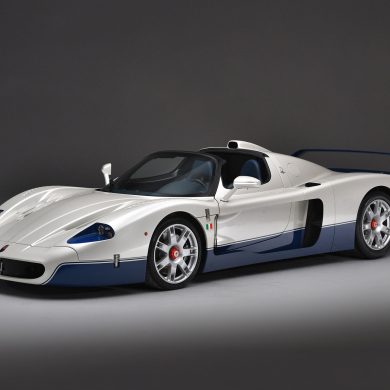
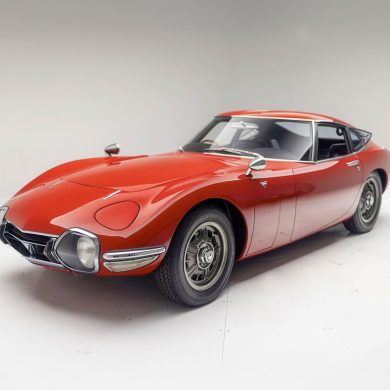
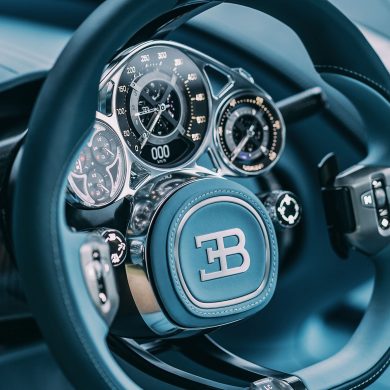

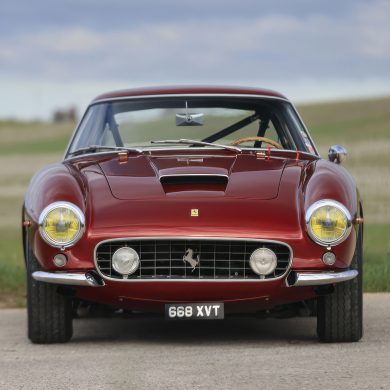



Interesting article. My friend and I own the Canon GTR from Richard Lloyd.